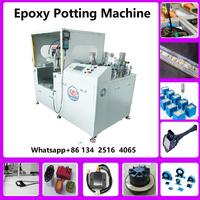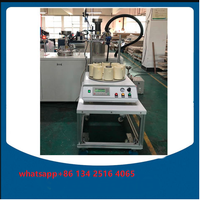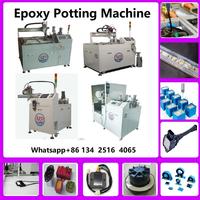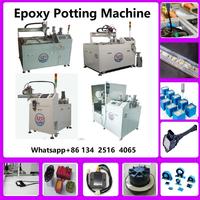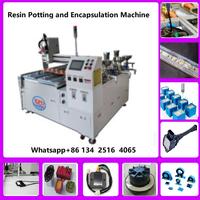5: 1 Silicone Dispenser Potting Machine for Solar PV Junction Box J-box glue potting and sealing encapsulate machine
Company Information:
Name: |
5: 1 Silicone Dispenser Potting Machine for Solar PV Junction Box J-box glue potting and sealing encapsulate machine |
Category: |
|
Offered by: |
|
5: 1 Silicone Dispenser Potting Machine for Solar PV Junction Box J-box glue potting and sealing encapsulate machine Description:
5: 1 Silicone Dispenser Potting Machine for Solar PV Junction Box J-box glue potting and sealing encapsulate machine
What is Electronic Potting?
In electronics, potting is a process of filling a complete electronic assembly with a solid or gelatinous compound for resistance to shock and vibration and excluding moisture and corrosive agents.
While the wholesale migration from mechanical to mostly electronic solutions and components has virtually eliminated the wear and material fatigue inherent in exposed and moving parts, solid-state technology has its range of issues that can interfere with reliable operation.
One of them is moisture in electronics that can cause false alarms, faulty operation, and micro-corrosion, leading to component and system failure. Another is accelerated aging due to air pockets and gaps, as well as exposure to corrosive agents. Some of these issues can be addressed with suitable encapsulation of vulnerable components and systems in housings, but that increases cost and may add size and weight.
"Potting is a simple, cost-effective way to increase the reliability and longevity of electronics components and systems."
An alternate solution to mechanical encapsulation is "potting" of electronics. It's called potting because just like the vulnerable root system of a plant is stabilized and protected by placing the plant in a pot and the pot then filled with soil, electronic components can be "potted" in suitable enclosures and with suitable compounds that not only protect against shock and vibration, but also against formation of moisture and exposure to corrosive agents. The overall idea is to encapsulate vulnerable electronic parts so that they are kept from any kind of harm.
How Does Electronics Potting Work?
Let's take a closer look at electronics "potting." In essence, it's like creating a suitable "pot" to put electronics in, then filling that pot with special curable liquids (like epoxies, polyurethanes, or silicones) that have thermal insulation and adhesive structural properties. Note that a "pot" can also be a cast that is removed once the potting compound has hardened, or components may just be dipped in a compound to encapsulate them.
Among the many advantages of "potting" electronics is that it is a very flexible solution. Potting can be applied only to high-risk parts and components as well as to complete boards and assemblies. Many potting materials are available, addressing conductivity, electrical and thermal isolation, and protection against various environmental conditions and threats.
The Electronics Potting Process
How is potting done? That depends on the type and use of the components to be potted.
On the chemical side, some materials or adhesives may have chemical reactions with certain potting materials, potentially resulting in non-cured areas. The proper potting compound is identified to produce the best result. Some electrical components may be inadequately sealed so that potting material may go where it is not supposed to go. Such components must be identified to avoid malfunction later on.
Different potting compounds require different processing. They may require unique mixing, different temperatures, different ways to eliminate bubbles, and additional curing to minimize shrinkage. Bubble elimination (or "degassing") may require vacuum chambers. For specific complicated potting projects, higher viscosity of the potting material is needed, and that's achieved via elevated temperatures.

Electronics Potting Equipment
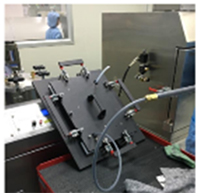
The electronic potting process requires highly specialized equipment. It includes machines for precise, uniform mixing of potting materials and de-gassing tanks that eliminate any air bubbles in the materials. Equipment must allow for precise adjustment of potting material ratios and flow speed. Electronic potting facilities also include vacuum and curing chambers with full temperature controls. Additional considerations here are the length and temperature of the curing process that have an impact on shrinking.
Quality and Process Inspections
Upon an initial potting run, technicians inspect to determine potting flow patterns, proper filling, curing. Sample units are dismantled, sliced, and then carefully examined. Findings are documented, and inspectors compile notes and checklists for potting operators. If problems are found, the potting process and materials are adjusted, and inspections are repeated until everything is expected. Potting samples may be kept for mixing ratio approvals.
Benefits of Electronic Potting
The benefits of potting are considerable. Potting does not only protect against moisture and exposure but also shock and vibration. It completely removes the harmful impact of air and moisture from the maintenance, reliability, and longevity equation while still protecting noisy parts and components sensitive to EMI.
How Does Potting Compare to Other Protective Solutions?
While potting is a mature and cost-effective way to protect electronics, other solutions can get the job done. One is a conformal coating, where a thin protective layer is applied to an entire circuit board. Another is placing components and systems in fully sealed housings. Both methods are widely used and have many beneficial applications. But, depending on the application, they may be less cost-efficient than potting, and neither conformal coating nor complete enclosures can address the issue of trapped hot air. As a result, strategically applied potting to at-risk components is often the best and most cost-efficient solution.
Applications of Electronic Potting
As the usage of electronics increase in modern life and industry areas, potting is an essential tool in keeping things up and running.
Some examples are:
- The automotive sector relies on numerous electronics parts and systems that may all be exposed to dirt, liquids, moisture, vibration, and extreme temperatures. Potting of strategic parts and components can significantly improve reliability and guard against premature aging and failure.
- Forklifts and other construction vehicles are routinely pressure-washed at the end of shifts, mandating suitable electronic systems and conduits for ongoing reliable operation. Again, potting can protect vulnerable parts and keeps them from harm.
- Infrastructure electronics such as traffic lights, switches, power supplies, sensors, etc., all depend on sealed enclosures for proper operation. Once those enclosures lose their effectiveness through aging, thermal and mechanical stress, UV exposure, etc., reliable operation is no longer guaranteed. Strategic component potting can significantly increase reliability and reduce repair and replacement costs.
Apart from these three examples, there are numerous other electronic applications and solutions where exposure to liquids and varying temperatures occur. All are at risk because even minute breaches in enclosures will result in moisture exposure and corrosive effects. Here again, electronic potting can help.

The Success of a Potting Project Relies on 4 Things:
- Pinpointing at-risk components with the highest return on investment from potting.
- Determining the potting compound with the exact right mix of properties for the project.
- A state-of-the-art electronics potting facility with all required equipment.
- An experienced electronics potting operator.
two-component resin automatic metering/mixing/dispensing machine. This system is using servo motors, high-precision metering valves and PLC control mode and this is specially designed for low and medium viscosity resins. (such as epoxies, urethanes, silicones and acrylics)
Feature
- Logical operation function
- Various parameter settings
- Manual testing of various components
- Mixing ratio monitoring and adjustment
- Can store multiple sets of operating programs
- Material output pressure detectors
- Low level alarm of pressure storage barrel
Dispensing one or two components’ materials in the object to enhance the products waterproof, heat conduction, Confidentiality protection, insulation between wire and etc.
5: 1 Silicone Dispenser Potting Machine for Solar PV Junction Box J-box glue potting and sealing encapsulate machine was added in Mar 2024
5: 1 Silicone Dispenser Potting Machine for Solar PV Junction Box J-box glue potting and sealing encapsulate machine has been viewed 16 times
20 More Products from Kapton Automation Equipment (Guangzhou) Co., Ltd :






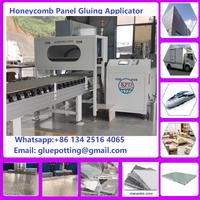

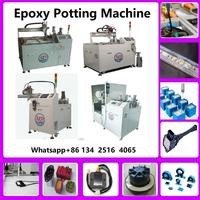
.jpg)

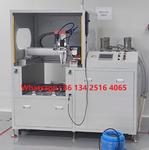
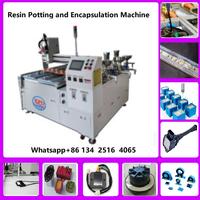
1.jpg)
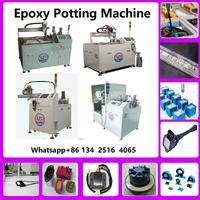
1.jpg)
